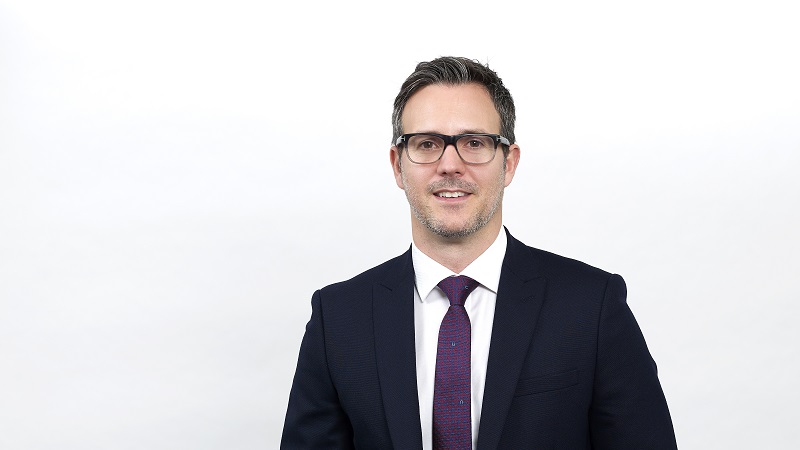Ben Gutteridge had only been at Invesco for two months when everyone was sent home as the pandemic took hold. He may have had to get to know his new colleagues remotely, but it hasn’t diverted him from the task in hand.
After more than 16 years at Brewin Dolphin, latterly as head of fund research, Gutteridge moved to Invesco in January 2020 to lead the group’s model portfolio service (MPS). The facility was launched in 2019 as a low-cost, low-turnover option for advisory clients. It is delivered by Intelliflo’s integrated MPS, which streamlines delivery, providing automated client communications for portfolio changes.
The service seeks to address some of the limitations of the advisory model: the difficulty and expense of implementing frequent fund or asset allocation changes across multiple clients, for example.
“The provision of MPS is very difficult for advisers,” says Gutteridge. “It requires client sign-off for each trade and there are a lot of frictions that make it tough to run.”
Today, investors are able to plug in their platform and risk-rating providers, plus their clients’ objectives – growth, income, or both – and the system spits out the model. The Intelliflo system eases the administrative process, including online signatures.
Nevertheless, an advisory model brought some clear parameters for Gutteridge. Funds had to be reliably long term in their approach, with established managers likely to stick around, and a tried-and-tested process.
Any fund included in the portfolio needed to be liquid and, given advisers may be using a range of platforms, widely available. The portfolios needed to be balanced across styles and regions.
Most of all, says Gutteridge, they were aware that advisers often used the service for their lower-income clients, which meant being even more careful.
“It definitely wasn’t about finding what’s hot, or trying to find fund managers our clients have never heard of,” he adds. “We wanted to avoid mistakes and certainly wouldn’t invest in something where it was difficult to move in and out.”
Gutteridge also had to be sensitive to the established preferences of advisers, who often had preferred funds that had worked well for them and they wanted to keep. He gives the example of the Fundsmith range, which was widely held.
“Our fund selection is, of necessity, conservative and we wanted to make sure advisers would recognise a lot of the names. They often don’t have the ability to push the dial on fund selection for their client base.” It was this type of ‘local knowledge’ that Gutteridge had built up at Brewins which made him appealing to Invesco.
Cost considerations were also central to the construction of the portfolios. The final charge for clients will depend on the platform and the underlying charges for the fund, but Invesco makes no charge for the service itself.
Invesco Multi Manager Growth 6 asset allocation
| UK equities | 10.35 |
| US equities | 17.98 |
| Europe ex UK equities | 8.63 |
| Japan equities | 3.73 |
| Pacific ex Japan equities | 1.44 |
| Emerging markets | 5.41 |
| Equities | 47.54 |
| UK govt bonds | 13.74 |
| Investment grade | 14.26 |
| High yield | 4.93 |
| Emerging markets bonds | 2.58 |
| Strategic bonds | 3.95 |
| Bonds | 39.46 |
| Alternatives | 10 |
| Cash | 3 |
Source: Invesco
Active value
Cost considerations haven’t pushed Gutteridge down a fully passive route, however. The service uses active and passive funds and he is a strong believer that active management can add real value. He will use passive funds where active isn’t delivering “bang for its buck” or to balance portfolio exposures, but it is not a default.
An example of how this works in practice is the position on duration. At the moment, most bond managers believe in recovery and, as such, it’s tough to find active funds with a long-duration. He says: “We agree with most bond fund managers that the global economy will get better and duration isn’t going to be a rewarding place to be. That said, an MPS is often a single vehicle for people to achieve their financial objectives, and we need to be very careful.
“If we do have these deflationary shocks, equities would likely feel it, and bonds that are very short-duration would feel it as well. With this in mind, we need some duration as a hedge against this lower probability outcome. We struggle to find this in active management at the moment, so we look to passive for that.”
In practice, the group does not employ a lot of tactical asset allocation in the portfolio. It is usually a core, long-term savings vehicle for the clients that hold it and implementing tactical views is difficult – Gutteridge says advisory portfolios aren’t the place for them.
“We are trying to realise long-term value. That means the asset allocation will evolve gradually. Adjustments tend to be minor and are usually only made on an annual basis,” he says. The overall asset allocation is set according to long-term return expectations for different asset classes. Short-term bursts of volatility typically have little impact on these models.
This low-turnover approach also means clients know when to expect portfolio updates and so are prepared in advance. In general, changes will come through once a year, in April. This makes it easier to follow the updates and advisers aren’t drawn into the other key problem of advisory services – lots of mismatched clients and a regulatory headache.
Communication is key
This low turnover will affect the portfolios in different ways at different times in the market cycle. For example, Gutteridge admits it would have been helpful to rebalance in March last year, putting more money into equities at market lows. Nevertheless, it also avoided the problem of selling out as volatility hit.
“In practice, our regular update came around a month after the bottom of the market, so our clients participated in the equity rally.”
He is quick to stress that low turnover doesn’t mean sitting around doing nothing in between annual fund reviews. They keep clients well informed on the latest market news, so they can pass details on to their clients. He takes his communication role seriously, delivering video content and spending time with clients. He also does weekly podcasts, where he speaks to internal and external luminaries about investment strategy. Recent podcasts have seen specialists from BCA Research, HSBC, Knight Frank in the chair, along with respected academics.
In its most recent update this April, Gutteridge kept the strategic equity weighting the same across the portfolios. The high yield and government bond weightings increased, at the expense of investment grade.
This doesn’t reflect any real love of government bonds, but he says they needed to counter the risk inherent in high-yield bonds. “We see that high yield has more value, but they nudge the portfolio risk a little higher. We want to put it into government bonds to keep the overall portfolio risk lower.”
On equities, he has taken a bit out of the UK and Europe, moving it into the US and Asia. This is more a positive decision in favour of the US and Asia, rather than a negative on the UK or Europe.
He says: “On a longer-term view, we believe there’s more quality and more reward to be had in the US and the Asian and emerging market story. In the US, there is potential dollar weakness and a strong economic recovery, while innovation in Asia is an improved story relative to the UK and Europe.”
“The UK debate is live within our team. It is certainly a cheap market, with lots of dividends and an improving macro story, with the vaccine rollout underway and a nasty Brexit avoided. The appeal of Asia and US was a bigger driver than anything against the UK.”
‘Deceptively simple’
The portfolios remain largely focused on equities and bonds. Again, this is largely due to the constraints of the advisory model. Gutteridge says: “We recognise that private market assets can be really interesting but will only use them where there is liquidity and availability.
“In general, we’re not looking for esoteric asset classes – equities, bonds and liquid alternatives tend to comprise the majority of our portfolios.” However, this still means they can delve into areas such as infrastructure, Reits or multi-asset credit for diversification and Gutteridge is making use of these alternatives in the portfolios today.
The service doesn’t have an ESG overlay, as has become the vogue this year. ESG considerations form part of the group’s decision-making process on the underlying managers. It also recently launched the Summit Responsible Range, a five-strong risk-rated multi-asset ESG strategy investing primarily in ETFs, so this is an alternative option for clients.
Performance is assessed against the mixed-asset peer groups. The service has only been going for 18 months, but Gutteridge has been encouraged by recent performance. He says: “Our reduced allocation to the UK has helped us in the longer term, though it hasn’t been as helpful over the last quarter. We’ve tended to have more in the US.”
The allocation to some good growth managers, notably Baillie Gifford, has meant the alpha delivered by fund selection has also been high. However, Gutteridge admits that it has been an exceptional year for the Scottish powerhouse and he wouldn’t expect such strong outperformance from fund selection in future, particularly with markets rotating towards value managers.
The portfolios don’t run with big style biases, so he has always held value funds alongside growth names. As such, he hasn’t had to scramble to keep up with the recent rotation into value. He tends to hold Invesco for value in Europe, Man GLG in the UK and Schroders in Asia.
Gutteridge has a 40-strong team behind him with input into the service. He may not have met many of them in person, but he still works closely with them behind the scenes. It is a busy machine behind a deceptively simple proposition.
This article first appeared in the May 2021 issue of Portfolio Adviser. Read more here.











